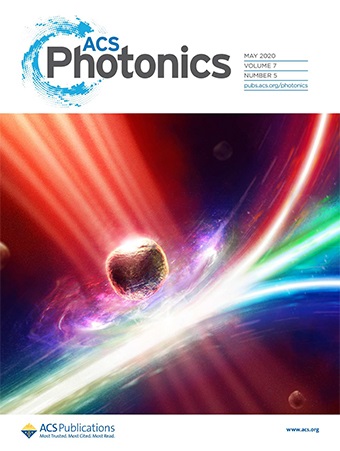05 June 2020
Electron microscope spectroscopy has improved enormously in these past years, allowing scientists to observe and obtain structural and dynamical information on materials with nanometer/femtosecond/meV space/time/energy resolution. This technique has enabled the extraction of spectral information on plasmons in metallic nanostructures, excitons in semiconductors, phonons in ionic crystals and graphene, and atomic vibrations in molecules, and delivered valuable information on how these systems behave.
Now, even though these instruments have proven to be excellent tools to characterize the linear response of nanomaterials, they are not capable of observing the higher-order nonlinear responses in these nanostructures because of the weak interaction between individual beamed electrons and sample excitations. Such nonlinear optical responses in nanostructures are key to better understand and improve the performance of nonlinear nanophotonic devices.
In a recent study published in ACS Photonics and illustrated on the cover of the journal, ICFO researchers Andrea Konečná, Valerio Di Giulio, and Vahagn Mkhitaryan led by ICREA Prof. at ICFO F. Javier García de Abajo, in collaboration with Prof. Claus Ropers from University of Göttingen, report on an approach that theoretically demonstrates the potential of photon-induced near-field electron microscopy (PINEM) to quantitatively probe the nonlinear optical response of materials with nanometer spatial resolution.

Pulsed electrons (white beam in the image) interact strongly with the near field of a nanostructure irradiated by ultrafast laser pulses (red beam)
PINEM allows having a femtosecond duration of both electron and optical pulses while employing high light intensities that can trigger substantial nonlinearities without damaging the sample. The instrument can then probe the nonlinear optical response of materials at length scales determined by the subnanometer transversal size of focused electron beams, for example to help unveil fundamental aspects of high-harmonic generation, such as its interplay with nonlocal and quantum-confinement effects at metallic sample boundaries.
In their study, the team of researchers have focused on the sampling of second-harmonic (SH) generation fields, which are revealed as asymmetries in the PINEM spectra. They illustrated this concept by first considering spherical gold nanoparticles, which, despite their centrosymmetry, display an evanescent SH near field that gives rise to substantially modified transmission electron spectra under attainable ultrafast illumination intensities below the damage threshold. They then explored the interaction with nanorods as an example of configuration in which linear-field coupling is strongly reduced.
The results of their study show that PINEM is excellent as a nonlinear optical characterization technique with unsurpassed combination of spatial and spectral resolution. The implementation of this technique could lead to a radical improvement in terms of noninvasiveness, intrinsic phase sensitivity, and spatial resolution compared to existing nonlinear characterization techniques relying on either far or near-field optics.















